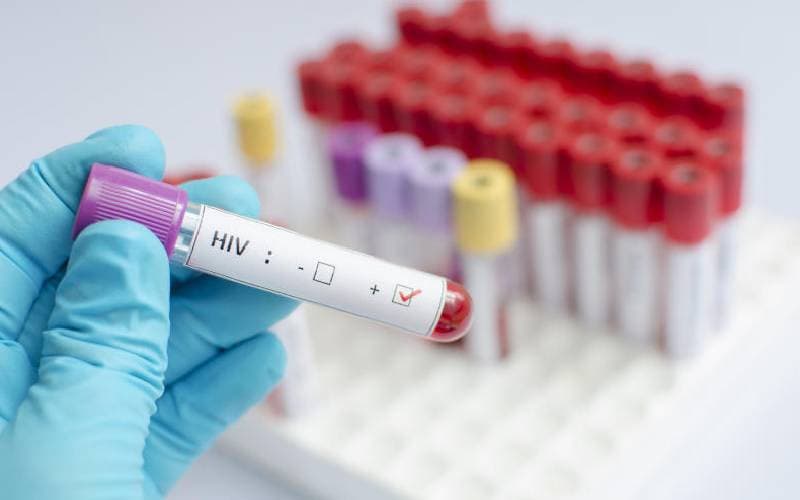We're loading the full news article for you. This includes the article content, images, author information, and related articles.
Over 1.3 million Kenyans on antiretroviral therapy face a precarious future as shifts in international funding and procurement delays trigger critical drug shortages and introduce new costs for previously free services, jeopardizing decades of progress against HIV/AIDS.

Kenya's acclaimed HIV treatment program, a lifeline for approximately 1.37 million people, is facing an unprecedented crisis that threatens to reverse years of hard-won progress. A confluence of shifting donor priorities, procurement bottlenecks, and domestic budget cuts has led to alarming shortages of essential antiretroviral (ARV) drugs and the introduction of new costs for services that have long been free. Patients across the country are now confronting the dual anxieties of uncertain drug availability and unexpected financial burdens for crucial tests like viral load monitoring.
The immediate cause of the crisis can be traced to disruptions in the supply chain for ARVs, largely funded by the U.S. President's Emergency Plan for AIDS Relief (PEPFAR) and the Global Fund. A government assessment in early 2025 warned that Kenya’s stock of Tenofovir/Lamivudine/Dolutegravir (TLD), the most common ARV regimen, would fall to less than a month's supply by May 2025. This was exacerbated by delays in the procurement and delivery of commodities. For the 2024/2025 cycle, PEPFAR had allocated Sh7.9 billion for HIV products, but as of February 2025, no deliveries had reached health facilities. This has created a significant gap in a country that requires an estimated Sh28 billion annually for HIV commodities.
The situation is compounded by broader shifts in foreign aid. A temporary suspension of some PEPFAR operations in early 2025, following a U.S. executive order, halted the distribution of already procured drugs and created widespread uncertainty. While partial waivers were later issued, the disruption highlighted Kenya's heavy reliance on external donors, who finance at least 66% of the national HIV budget. Furthermore, the Kenyan government's own 2025/2026 budget saw a significant Sh11.4 billion cut to the allocation for HIV, Tuberculosis, and malaria programs, deepening the funding crisis at a critical moment.
For Kenyans living with HIV, the consequences are direct and severe. Patients who have received free, comprehensive care for years are now being asked to pay for services. At some facilities, patients are required to register for the new Social Health Authority (SHA) to access services, a departure from the previously donor-supported system. Viral load tests, essential for monitoring treatment effectiveness, now cost as much as Sh3,000 at some centers. Other facilities, particularly private ones that have lost external funding, are introducing user fees ranging from Sh500 to Sh1,000.
Health facilities have resorted to rationing medications, providing only a one-month supply of ARVs instead of the standard three or six months. This not only increases the travel and time burden on patients but also heightens the risk of treatment interruption. Experts warn that inconsistent access to ARVs can lead to drug resistance, opportunistic infections, and ultimately, a resurgence in AIDS-related deaths. The shortages also affect laboratory reagents needed for monitoring treatment, compromising the quality of care.
In response to the escalating crisis, Kenyan health authorities, including the Ministry of Health and the Council of Governors, have engaged in urgent measures. Recommendations have included expediting the procurement of ARVs through the Global Fund and urging the Kenya Medical Supplies Authority (KEMSA) to fast-track government-procured doses. There have been calls for the government to allocate an emergency fund of Sh8.7 billion to avert stock-outs and to fully absorb the costs of maintaining the national HIV data infrastructure previously supported by the U.S.
Dr. Patrick Amoth, the Director General for Health, has reaffirmed the government's commitment to ensuring uninterrupted HIV services, stating that care remains available in over 6,000 facilities nationwide. However, the reality on the ground, as reported by patients, suggests a significant gap between official assurances and the lived experience of those dependent on the public health system. Advocacy groups and civil society organizations continue to pressure the government to increase domestic financing for health to ensure a sustainable, long-term solution and reduce its dependency on fluctuating donor priorities.
Keep the conversation in one place—threads here stay linked to the story and in the forums.
Other hot threads
E-sports and Gaming Community in Kenya
Active 6 months ago
Popular Recreational Activities Across Counties
Active 6 months ago
The Role of Technology in Modern Agriculture (AgriTech)
Active 6 months ago
Investing in Youth Sports Development Programs
Active 6 months ago